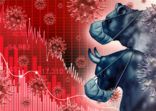Despite their rebounds from the end of 2015, Japanese equities continued to be viewed as one of the cheapest in the developed markets.
Earlier this year, Japan adopted negative interest rates, but there are expectations for further qualitative easing, followed by a weak economic growth number for the fourth quarter of 2015.
All these could provide further support to the Japanese equities if the country’s fundamentals are seen improving, but this remains a big uncertainty for investors if they are keen to put their money into the Japanese equities, and if their decisions are made solely based on the Japanese market’s valuations.
“When looking at the historical periods, Japanese equity market has been less attached to the global markets. Under the current market uncertainty, we believe that Japanese equities would be a place that investors should consider. When looking at the valuation of the developed markets, the Japanese equity valuation is more attractive versus the US equities because they have been trading close to their historical average levels. In addition, the business of major corporates in Japan has been improving in terms of their earnings margins,” Luke Ng, senior vice president of research at FE Advisory Asia told Fund Selector Asia.
Ng provides a comparative analysis.
Investment strategy

Both funds have been in the market for a long time. The JPM fund was launched in August 1969 and the PineBridge was launched in January 1998.
The two funds are both set up as unit trusts, with the JPM product domiciled in Hong Kong and the PineBridge fund in Ireland.
“JPMorgan has maintained a sizeable team focusing on Japanese equities, even when the market has been out of favour over the past two decades,” Ng said.
The fund adopts a bottom-up approach, aiming to identify stock opportunities that are able to the “Growth at Reasonable Price” (GARP) model, he added.
Ng said an additional 20% gearing is allowed for the JPM fund and the team has decided to start gearing up the Japanese equities exposure from 2012 in response to the positive view of the market.
“The JPM fund’s net exposure was maintained at around 115% to 120% until the middle of 2015, when the team reduced the exposure to around 105%. That helped to deliver strong return as Japanese equities rallied over the period,” he said.
For PineBridge, the team adopts a combination of a top-down approach, which drives the asset allocation, and a bottom-up approach that aims to identify investment opportunities emerging in different companies’ life cycles, he said.
“In relative terms, the JPM fund tends to focus more on mid caps than that of the PineBridge fund, and in the JPM fund’s portfolio, you cannot see Japanese giants such as Toyota Motor, Honda Motor and Canon, as JPM considers these companies as losing their competitive advantages to their Korean rivals,” Ng said.
On the other hand, the JPM fund sees opportunities in companies that tend to benefit from the factory automation themes, e-commerce business, premium quality brand that provides healthcare products or rice cookers that are attracting strong demand from Chinese consumers, he said.
“For PineBridge, the team favours certain IT and Industrials companies that are connected to the structural changes driven by the consumption demand within China and Asia, as well as the turnaround stories arising from corporate reforms and restructuring opportunities within the region,” he added.
Sector comparison
| JPMorgan | % | PineBridge | % |
| Services | 21.0 | Consumer Discretionary | 21.4 |
| Electric Appliances | 14.0 | Industrials | 17.8 |
| Information & Communications | 11.7 | Information Technolgoy | 17.6 |
| Retail Trade | 11.1 | Financials | 13.3 |
| Pharmaceutical | 9.3 | Consumer Staples | 10.2 |
| Chemicals | 8.9 | Healthcare | 6.2 |
| Foods | 6.8 | Materials | 5.5 |
| Machinery | 6.3 | Telecom Services | 4.1 |
| Transportation Equipment | 5.2 | Cash | 3.1 |
| Other Financing Business | 3.8 | Others | 0.7 |
Sources: Firms’ factsheet as of the end of January
Performance

As of the end of February, the JPM product significantly outperformed the PineBridge vehicle over a one-year period (3.04% versus -9.63%), a three-year period (55.47% versus 13.00%) and a five-year period (50.74% versus 6.83%).
“The correct call to increase its net exposure to 120% throughout the rally from 2013 to 2015 was the key to the strong performance, of the JPM product, while a good bottom-up selection also positively contributed to the fund over the period,” Ng said.
This has provided support to the JPM fund, in particular, at the beginning of 2016, when it maintained its net exposure at around 105%, but continued to hold up well against Japanese equity peers and major indices in face of market correction, thanks to good stock selection, especially in healthcare stocks and reduction in financial stocks.
On the other hand, the PineBridge product suffered both in January and February, as it raised positions in the IT sector, which was hurt by poor earnings, he said.
JPM versus PineBridge over the last three years

















